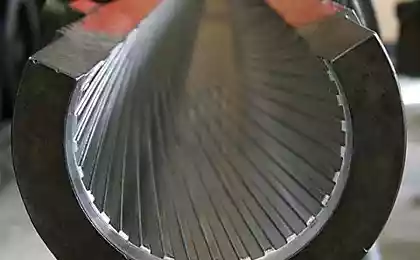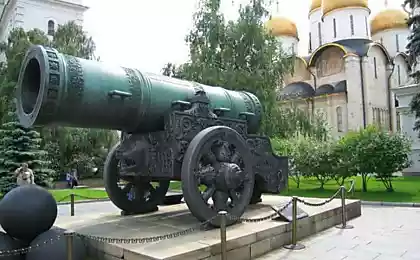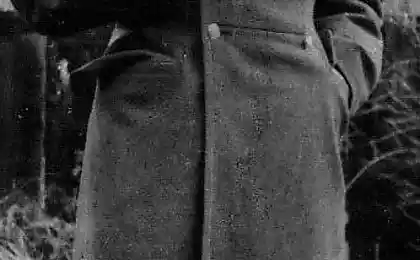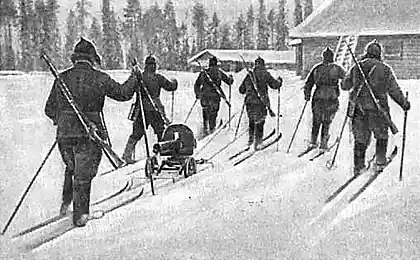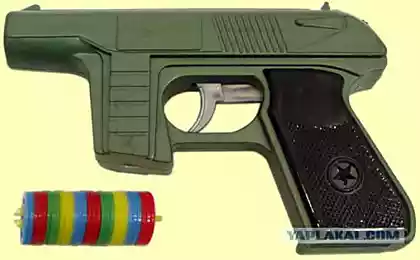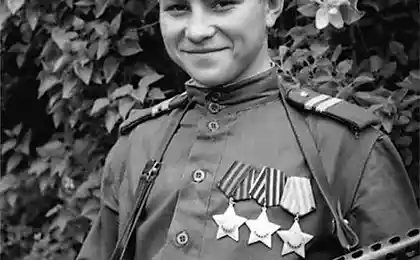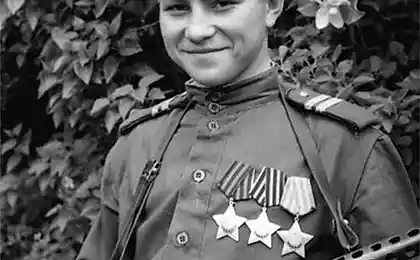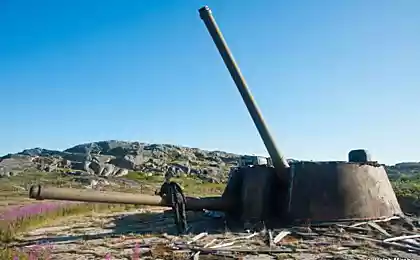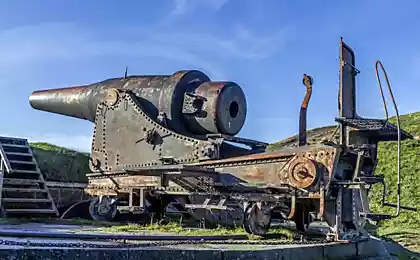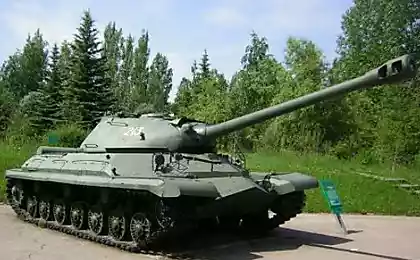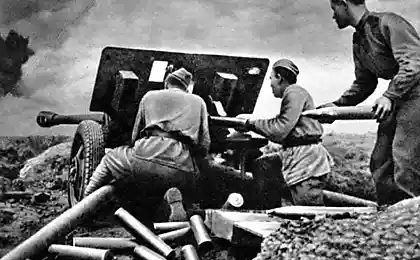1258
The earliest stone tools
The oldest stone tools
The most ancient traces of homo sapiens in our country opened in the late 1970s, an archaeologist from Yakutsk Mochanov. Led by their expedition discovered on the banks of the Lena-Deering Yurahe stone tools apparently made by human hands about two million years ago. They are cleaved with stones, sharp edges - the so-called choppers. In 1983 he found and "anvil", that is, large stones, which fought choppers. Hits choppers close to two and a half thousand, suggesting that the "mass" of their production in those days.
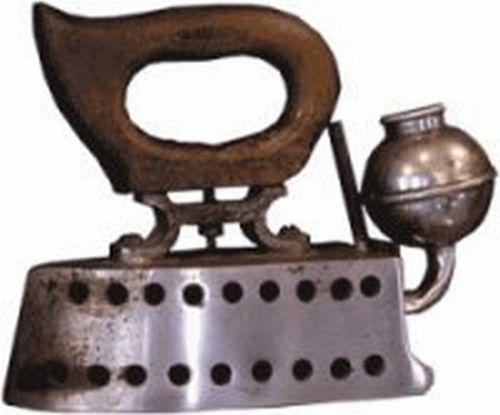
The oldest of harvest KNIFE
In the parking lot of ancient people in the southern Urals Yangelka found reaping hook knife, whose age is about 10 thousand years. Its wooden frame smoldered but vkladyshevye blade - microlites - were in the form of a curved knife. Microlite - is a small (less than one centimeter in width) and a very sharp stone plate. The frame in the form of a sickle could be not only wood, but bone. Stone blades hundreds of times sharper than modern scalpels, cut wood, bone, glass. Hardness second only to diamond and corundum. Ural microliths - the oldest in the world of standardized vkladyshevye reaping blade knives.
The oldest pen
The oldest fountain pen - more than 800 years. Employees of the famous Matenadaran in Armenia found that these modern pens upotreblinlis back in 1166. This is evidenced by notes in the margins of some documents. Stepanos clerk, for example, reports that, just "dipped", he could write his pen 700 characters - about one page.
FIRST IRON
The first written mention of iron in Russia refers to 1636. The book records costs queen - wife of Mikhail Romanov - the recording was made, "of January, 31 days, blacksmith Ivashka Trofimov 5 Altyn, and for the money it zdelal in Tsaritsyno Chamber iron iron».
Oldest SCISSORS
The oldest in Eastern Europe, the scissors were found during archaeological excavations near Smolensk, in Gnezdovo. These scissors are made in the X century and represent two of the saw blade connected by a rod.
First points
Invented in the 'queen of mirrors "of Venice, glasses upotreblintsya started in Russia since the end of the XV century.
The oldest CARPET
The oldest carpet in the world is kept in the St. Petersburg Hermitage. According to archaeologists, the "age" of the carpet is not less than 2, 5 thousand years. He discovered an archaeologist Sergei Rudenko (1885 - 1969) in 1947 during the excavation of one of stone barrows in. Gorny Altai (in the valley Pazryk). They were buried under mounds leaders pastoral tribes who lived in the V - IV centuries BC. Finer work woven carpet (IV - III century BC) preserved soft velvety nap "sow." The dimensions of the carpet - 1, 8x1, 8 meters.
MOST old scores
The collection of the teacher from Ufa Karasev office presented scores from different countries. There are Chinese, Japanese, Italian, American, but of particular interest are Russian accounts of the XVI century, where there is a kind of storage device. According to the owner of the collection, they are even more convenient electronic calculator. They can perform operations with common fractions with which to this day can not handle modern computers.
FIRST BRICK IN RUSSIA
In Russia began to make bricks in the XI century. In form it bore little resemblance to modern and had a special name - "plinfa." Masters in Kiev, Novgorod, Chernigov, "baked" flat, like tile, brick and erected the first stone of a building. Later, in the XV century, began to make bricks in Moscow. And in 1583, during the reign of Ivan the Terrible, was created "The Order of stone affairs." He vigilantly followed the work of "brick barns" as they were called cooperatives producing bricks. There hallmarks: "D" - Danilov Monastery, «X» - Khamovniki plant ... These stamps were a sign of quality building materials, fake stamps is strictly punishable by law.
RUSSIAN WALLPAPER
In Russia, Wallpaper first appeared in the second half of the XVIII century. Before 1830 - 1840-ies, they were made of verzhirovannoy - with water marks - paper. Paper strip composed of individual parts and is sufficiently dense - in two tenths of a millimeter thick. And only in the first third of the XIX century in Russia moved to roll, or as it was also called "endless" paper, which was more than fine. The first building, which was used in the interior of paper wallpaper manufactured at Tsarskoye Selo factory became Yelagin Palace in St. Petersburg, rebuilt the famous architect Carlo Rossi in 1818 - 1822 years.
Sewing machines ... TREE OF
In 1895 the newspaper "Vyatka Region" reported that the museum brought a makeshift wooden sewing machine, which gathered peasant Ivan Badanin. How did he come up with such a strange idea? Once in the village Gorodishchenskaya, where he lived in his youth Badanin, announced itinerant tailors. When they worked at home sharpness carpenter Ivan the night was drawing a sewing machine, and then fashioned a wooden model of it. Later he made another, more successful car, which gives a smooth seam even dreadnoughts. The remarkable thing came to the exhibition in Perm. Craftsmen were given the award. Then the car became a museum exhibit of the machine-building plant in White Kholunitsa Kirov region.
The most ancient traces of homo sapiens in our country opened in the late 1970s, an archaeologist from Yakutsk Mochanov. Led by their expedition discovered on the banks of the Lena-Deering Yurahe stone tools apparently made by human hands about two million years ago. They are cleaved with stones, sharp edges - the so-called choppers. In 1983 he found and "anvil", that is, large stones, which fought choppers. Hits choppers close to two and a half thousand, suggesting that the "mass" of their production in those days.

The oldest of harvest KNIFE
In the parking lot of ancient people in the southern Urals Yangelka found reaping hook knife, whose age is about 10 thousand years. Its wooden frame smoldered but vkladyshevye blade - microlites - were in the form of a curved knife. Microlite - is a small (less than one centimeter in width) and a very sharp stone plate. The frame in the form of a sickle could be not only wood, but bone. Stone blades hundreds of times sharper than modern scalpels, cut wood, bone, glass. Hardness second only to diamond and corundum. Ural microliths - the oldest in the world of standardized vkladyshevye reaping blade knives.
The oldest pen
The oldest fountain pen - more than 800 years. Employees of the famous Matenadaran in Armenia found that these modern pens upotreblinlis back in 1166. This is evidenced by notes in the margins of some documents. Stepanos clerk, for example, reports that, just "dipped", he could write his pen 700 characters - about one page.
FIRST IRON
The first written mention of iron in Russia refers to 1636. The book records costs queen - wife of Mikhail Romanov - the recording was made, "of January, 31 days, blacksmith Ivashka Trofimov 5 Altyn, and for the money it zdelal in Tsaritsyno Chamber iron iron».
Oldest SCISSORS
The oldest in Eastern Europe, the scissors were found during archaeological excavations near Smolensk, in Gnezdovo. These scissors are made in the X century and represent two of the saw blade connected by a rod.
First points
Invented in the 'queen of mirrors "of Venice, glasses upotreblintsya started in Russia since the end of the XV century.
The oldest CARPET
The oldest carpet in the world is kept in the St. Petersburg Hermitage. According to archaeologists, the "age" of the carpet is not less than 2, 5 thousand years. He discovered an archaeologist Sergei Rudenko (1885 - 1969) in 1947 during the excavation of one of stone barrows in. Gorny Altai (in the valley Pazryk). They were buried under mounds leaders pastoral tribes who lived in the V - IV centuries BC. Finer work woven carpet (IV - III century BC) preserved soft velvety nap "sow." The dimensions of the carpet - 1, 8x1, 8 meters.
MOST old scores
The collection of the teacher from Ufa Karasev office presented scores from different countries. There are Chinese, Japanese, Italian, American, but of particular interest are Russian accounts of the XVI century, where there is a kind of storage device. According to the owner of the collection, they are even more convenient electronic calculator. They can perform operations with common fractions with which to this day can not handle modern computers.
FIRST BRICK IN RUSSIA
In Russia began to make bricks in the XI century. In form it bore little resemblance to modern and had a special name - "plinfa." Masters in Kiev, Novgorod, Chernigov, "baked" flat, like tile, brick and erected the first stone of a building. Later, in the XV century, began to make bricks in Moscow. And in 1583, during the reign of Ivan the Terrible, was created "The Order of stone affairs." He vigilantly followed the work of "brick barns" as they were called cooperatives producing bricks. There hallmarks: "D" - Danilov Monastery, «X» - Khamovniki plant ... These stamps were a sign of quality building materials, fake stamps is strictly punishable by law.
RUSSIAN WALLPAPER
In Russia, Wallpaper first appeared in the second half of the XVIII century. Before 1830 - 1840-ies, they were made of verzhirovannoy - with water marks - paper. Paper strip composed of individual parts and is sufficiently dense - in two tenths of a millimeter thick. And only in the first third of the XIX century in Russia moved to roll, or as it was also called "endless" paper, which was more than fine. The first building, which was used in the interior of paper wallpaper manufactured at Tsarskoye Selo factory became Yelagin Palace in St. Petersburg, rebuilt the famous architect Carlo Rossi in 1818 - 1822 years.
Sewing machines ... TREE OF
In 1895 the newspaper "Vyatka Region" reported that the museum brought a makeshift wooden sewing machine, which gathered peasant Ivan Badanin. How did he come up with such a strange idea? Once in the village Gorodishchenskaya, where he lived in his youth Badanin, announced itinerant tailors. When they worked at home sharpness carpenter Ivan the night was drawing a sewing machine, and then fashioned a wooden model of it. Later he made another, more successful car, which gives a smooth seam even dreadnoughts. The remarkable thing came to the exhibition in Perm. Craftsmen were given the award. Then the car became a museum exhibit of the machine-building plant in White Kholunitsa Kirov region.
